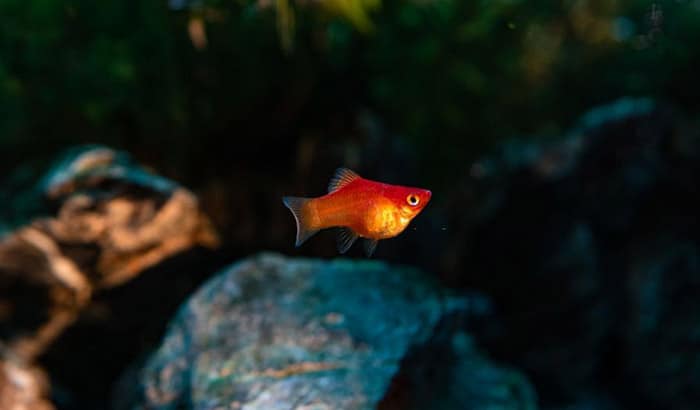What is Platy Fish?
The Platy fish is a freshwater fish that is native to Central America. It is a popular aquarium fish and is known for its bright colors. The Platyfish is a member of the family Poeciliidae and is closely related to the Guppy.
It is a small fish, growing to reach 2 to 3 inches. There are also dwarf platy fish that are only 1 inch long. They are livebearers, meaning they give birth to live young rather than laying eggs.
Platies come in a wide variety of colors, including red, orange, yellow, blue, and green. They have a torpedo-shaped body with a rounded tail fin. Males are typically smaller than females and have longer fins.
They are a popular choice for aquariums because of their vibrant colors and active personalities. Platies are generally peaceful fish, although they can be nippy towards smaller tank mates.
Aquarists should keep them with other peaceful fish of a similar size. When kept in groups, platies will often form pairs or small schools.
Platies are relatively easy to care for and make a great choice for beginner aquarists. They are tolerant of a wide range of water conditions and do not require special care. Platies are also known to be good “algae eaters” and can help keep your aquarium clean.
Types of Platy Fish
There are many different types of platyfish, each with its own unique colors, patterns, and shapes.
Variable platyfish (Xiphophorus variatus)
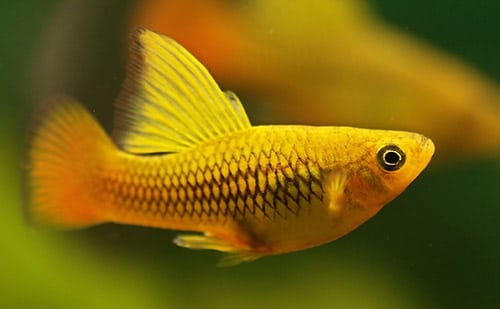
Also known as variatus platyfish living in freshwater, this species is native to Central America. It grows to a maximum length of around 4 inches and is characterized by its yellow-and-black coloration.
Southern platyfish (Xiphophorus maculatus)
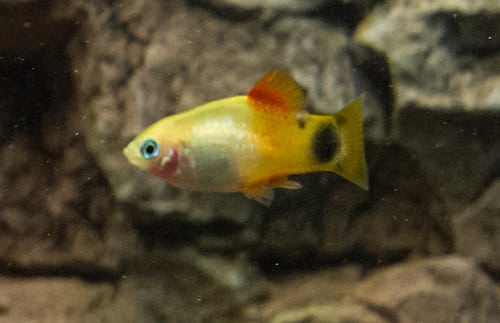
This southern platyfish is native to Central America. It grows to a maximum length of around 3 inches and is usually brightly colored, with orange, red, or yellow being the most common hues.
Green swordtail (Xiphophorus helleri)
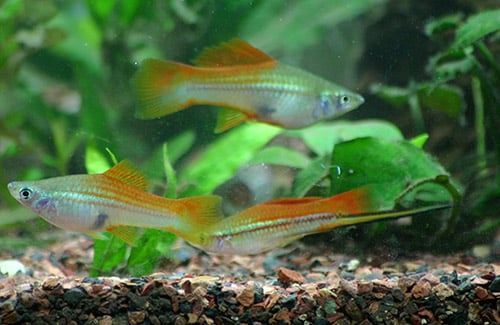
The swordtail platy fish is another Central American native. It gets its name from the long, sword-like extension of the males’ tails. Females typically reach a length of 4 inches, while males can grow up to 6 inches in length.
Monterrey platyfish (Xiphophorus couchianus)
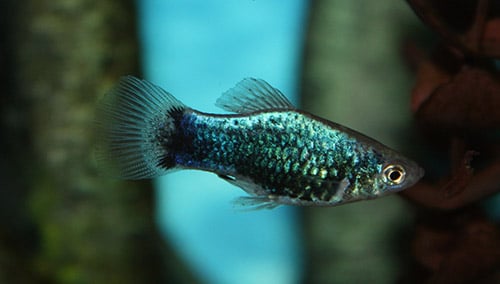
This platy fish is yet another Central American variety. It is characterized by the dark spots that cover its body. Speckled platies typically grow to a length of around 3 inches.
Platy Fish behavior
One of the most important things to understand about platy fish behavior is that they are very social creatures. They prefer to live in groups of at least six fish, but larger groups are even better. If you only have a few plates, they may become stressed and start to fight with each other.
Platy fish are also known for being very active. They love to swim and explore their surroundings, so it’s important to provide them with a tank that is large enough for them to move around in. A few hiding places and some live plants will also help keep your platy fish happy.
One thing to watch out for with platy fish is aggression toward other fish. Platies are generally peaceful creatures, but there can be occasional disputes between individuals or between males and females. If you see your platies fighting, try to separate them by adding some more hiding places or rearranging the decorations in the tank.
Male vs female Platy Fish
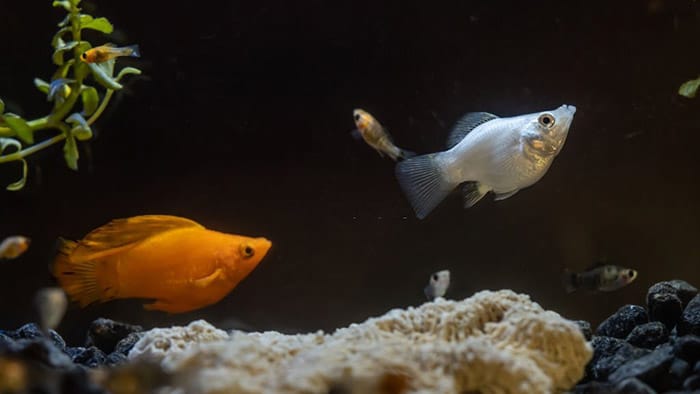
Appearance
Male Platy fish are typically smaller than their female counterparts and have more vibrant colors.
Male fish also tend to have longer and thinner fins. The male Platy Fish is usually brightly colored with blue, red, or yellow spots. Females, on the other hand, are generally larger, more rounded and have duller colors.
Temperament
Male Platy fish are more aggressive than females and are also more territorial. They are also more likely to chase other fish. Females are generally peaceful and calm, and they tend to get along well with other fish.
Size
Male Platy fish usually grow to be about 2 inches long, while females can reach up to 3 inches in length.
Shape
Male Platy Fish are typically slimmer than female Platy Fish. Female Platy Fish also have a more rounded body shape.
Behavior
Males and females also differ in behavior. Males are more aggressive and territorial than females. They will often chase other fish away from their territory. Females are more passive and tend to stay close to plant life for shelter.
When it comes time to mate, the male will chase the female until she agrees to mate. After mating, the female will lay her eggs in a safe place and the male will fertilize them. The female will then leave the eggs to be incubated by the male.
Which fish do Platy Fish get along with
When it comes to choosing tank mates for Platies, it’s important to choose fish that are similar in size. Platies are small fish, so they can be easily bullied by larger, more aggressive fish. Avoid keeping Platies with larger, more aggressive fish as they may bully or harass the smaller Platies
Platies are also known to be fin nippers, so it’s best to avoid keeping them with fish that have long fins or tail extensions (like Angels or Bettas). If you do decide to keep Platies with fish that have long fins, be sure to provide plenty of hiding places and plenty of space for the fish to swim so they can avoid being nipped.
If you’re thinking about adding some platies to your tank, here are some other fish that they’re known to get along with:
- Tetras: Tetras are small, peaceful fish that make good tank mates for platies. These brightly colored fish are active swimmers and will add some beautiful visual interest to your aquarium.
- Guppies: Guppies are another popular freshwater fish that Platy Fish get along with well. These social creatures enjoy being in groups, so it’s best to keep at least 3 to 4 of them together.
- Mollies: Mollies are a type of fish that is closely related to platies. They are peaceful by nature and make good tank mates for Platy Fish.
- Danios: Danios are schooling fish, which means they do best when they’re kept in groups. These active fish are known to be playful and can get along well with Platy Fish.
How Big can Platy Fish grow
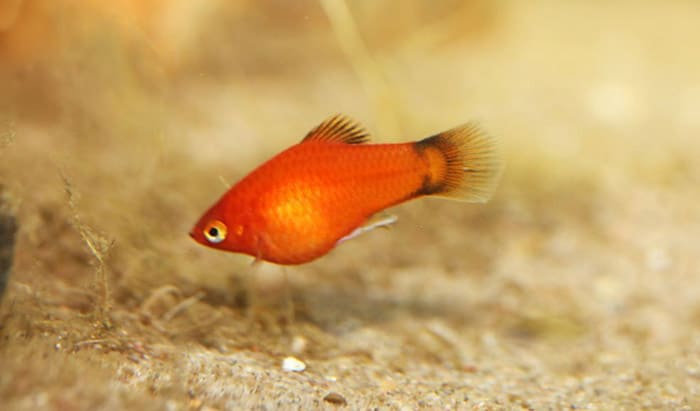
As we mentioned, most platies will reach a maximum length of three to four inches, with the occasional individual reaching five inches.
Common platies (Xiphophorus maculatus) reach about 2.5 inches (6.4 centimeters) in length when fully grown. But some species can grow much larger.
The giant platyfish (Xiphophorus xiphidium), for example, can grow up to 8 inches (20 cm) in length.
And the swordtail platyfish (Xiphophorus clemenciae) can reach lengths of up to 10 inches (25 cm).
How long do Platy Fish live
According to most estimates, Platy Fish have a lifespan of between 2 and 5 years in captivity. However, some individual fish have been known to live for much longer periods – up to 10 years or more.
In the wild, these fish typically have a shorter lifespan due to predation and other environmental factors. Proper care and maintenance can help extend the lifespan of your Platy Fish significantly.
How to Platy Fish sleep
Most fish can sleep with both eyes open since they do not have eyelids. However, platies have a third eyelid called a nictitating membrane that covers their eyes when they sleep. This eyelid helps protect the eye and keeps it moist.
When platies sleep, they usually rest near the bottom of the tank. They may lie on their side or upside down on a plant or piece of driftwood. You may also notice that your platy’s colors will appear duller when they are sleeping.
It is important to provide your platy with a peaceful environment at night so they can get a good night’s sleep.
Turn off any lights in the aquarium and avoid making too much noise around the tank.
If you must move something in the tank, do so slowly and carefully so as not to startle your fish.
Your platy’s sleep patterns will vary depending on the time of year and the temperature of the water. In the wild, platies are most active during the daytime when it is warmer. As the temperature starts to drop at night, they will slow down and become less active.
So, Where do platies sleep?
Platies can sleep anywhere in their tank that they feel safe and comfortable. This might be at the bottom of the tank, near some plants, or in a hiding spot that they have created themselves. As long as there is no threat of predators, platies will be happy to snooze just about anywhere!
Most Platy Fish are active during the day, although some species are more nocturnal. At night, they typically sleep near the bottom of their tank or in a hiding spot.
Some Platy Fish may remain awake and swim around at night if there is enough light in the tank. However, most Platy Fish will sleep if the lights are off or dimmed. If you notice your Platy Fish swimming less at night, this is likely due to them preparing for sleep.
To help your Platy Fish get a good night’s sleep, make sure their tank is dark and quiet. You can also provide them with a hiding spot, such as a cave or piece of driftwood, where they feel safe and secure.
How to choose a Platy Fish
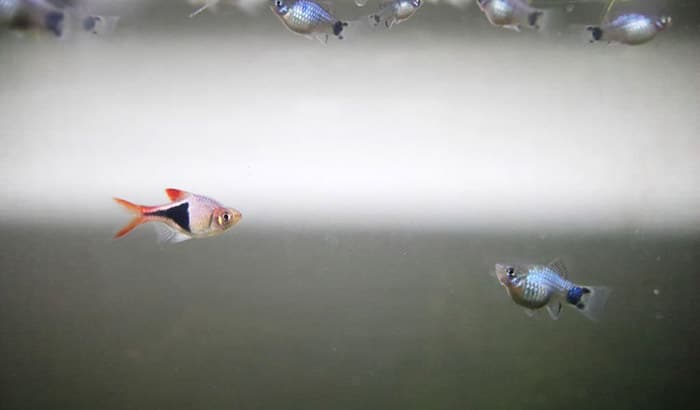
When choosing a Platy fish, it is important to consider the following:
The color of the fish
Platies come in many different colors, so you can choose one that matches your aquarium’s aesthetic. However, keep in mind that some colors may be more difficult to find than others.
The temperament of the fish
Some Platies are more active than others and may not do well in a peaceful community aquarium. It is important to research the temperament of the Platy fish you are interested in before making a purchase.
The personality of fish
Platies are known for their playful personalities and can be a great addition to any aquarium. However, some Platies may be shyer than others. Choose a Platy fish that you think will fit well with your personality.
The health of the fish
Before purchasing any fish, it is important to make sure that it is healthy. This includes checking for signs of disease and parasites. A healthy Platy fish should have bright eyes, clear fins, and smooth scales.
The price of the fish
Platies is relatively inexpensive, about $2 to $5 for each plplatyfisho cost should not be a major factor when choosing one. However, keep in mind that some colors and sizes may be more expensive than others.
How much does Platy Fish cost
While platies are generally inexpensive fish, the exact cost will vary depending on the specific variety and where you purchase them.
On average, platies cost between $2 and $5 each. However, some rarer varieties can cost upwards of $10 each. You can usually find platies for sale at your local pet store or online retailer. If you purchase them in a group of six or more, you may be able to get a discount.
How many Platy Fish in a tank
The number of Platy fish you can keep in a tank depends on the size of your tank and the other fish that are in it. Most experts recommend at least 2 gallons per Platy fish. But, really, the more space the better. A larger tank will also help to reduce stress and aggression between fish.
Assuming you are talking about common platies, the recommended number of platies per gallon is 3-5. This number will change depending on the size of your tank and the other fish you have in it.
If you have a smaller tank, or if you have other fish that are aggressive towards platies, you will want to keep fewer platies in your tank.
When stocking a tank with Platy fish, it’s best to start with just a few and then slowly add more over time. This will give the fish time to adjust to their new environment and each other.
It’s also important to make sure that there is a good ratio of males to females. A ratio of 3:1 is ideal, but 2:1 will work as well.
Can Platy Fish live without a filter
Some people believe that platyfish can live without a filter; however, this is not the case.
The main reason why platies need a filter is that they are very messy eaters. Platies tend to leave a lot of uneaten food behind, which can quickly pollute the water. A filter helps to remove this excess food and keep the water clean.
Platies also produce a lot of waste, so a filter is necessary to remove this waste from the water.
Additionally, platyfish are often found in schools and do best when they have other platies to interact with. A filter can help provide some of the benefits of being in a school, such as increased oxygenation and better water quality.
Although they will not thrive in these conditions, they can survive for short periods of time without a filter.
If you do not have a filter, you will need to do more water changes to keep the water clean. It is also important to feed your platies less so that there is less uneaten food in the tank. Without a filter, platies would eventually succumb to poor water quality and die.
Can Platy Fish live without a heater
It is a common misconception that platyfish require a heater in their tank. However, Platies are actually quite tolerant of a wide range of water temperatures. They can live comfortably in water that is anywhere from 72 to 82 degrees Fahrenheit.
So, if you’re wondering if you can keep Platies without a heater, the answer is yes! Just be sure to maintain the water temperature within their ideal range.
Of course, there are always exceptions to the rule. If you live in an area with particularly cold winters, or if your home is prone to drafts, then you may need to invest in a heater for your platy fish tank. But for most people, Platies can thrive without one.
Common Questions About Platies
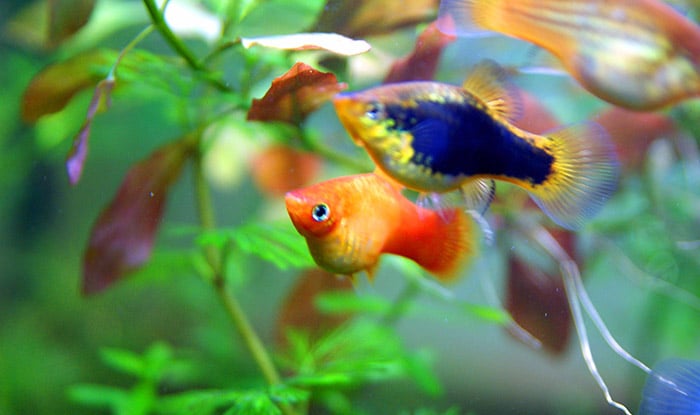
Do platies need to be kept in pairs?
No, platies can be kept singly or in groups. However, if you keep more than one platy, it is best to have at least one male and one female so that they can breed.
Can platies breed with other fish species?
Yes, platies can breed with other fish species, but the offspring will not be true-breeding platies. In addition, cross-breeding can result in hybrids that are less hardy and more susceptible to disease.
How often do platies breed?
In their natural environment, platies breed seasonally, typically in the spring and summer. In captivity, however, they can breed year-round if the conditions are right.
How many young do platies have at one time?
Platies typically give birth to between 5 and 20 young at a time. However, larger females may give birth to up to 50 young at once.
Do platies like to be handled?
No, platies do not like to be handled and should only be removed from the water for short periods. If you must handle your platy, be sure to wet your hands first to avoid harming your delicate skin.
How can I tell if my platy is sick?
Some common signs of illness in platies include lethargy, loss of appetite, cloudy eyes, and white spots on the skin. If you notice any of these signs, take your platy to the vet for a check-up.
Conclusion
The Platy is a great beginner fish for those looking to start a freshwater aquarium. They are very peaceful, easy to care for, and can live in a wide range of water conditions. These lively little fish make a great addition to any community aquarium.
We hope you enjoyed these fun facts about platy fish! These popular freshwater aquarium fish are easy to care for and make great additions to any tank. So if you’re looking for a colorful and active fish, consider adding a few platies to your collection. Thanks for reading!

